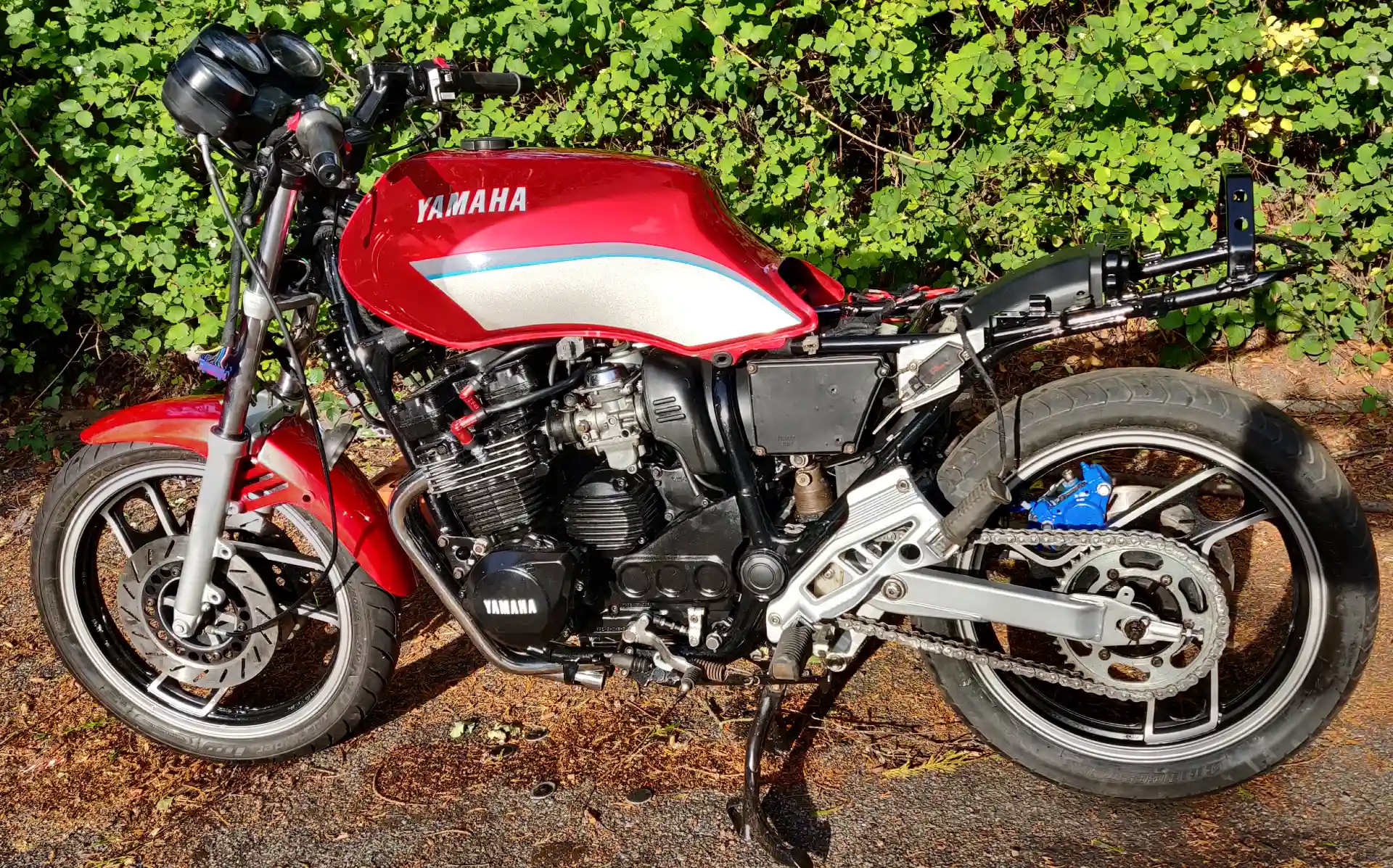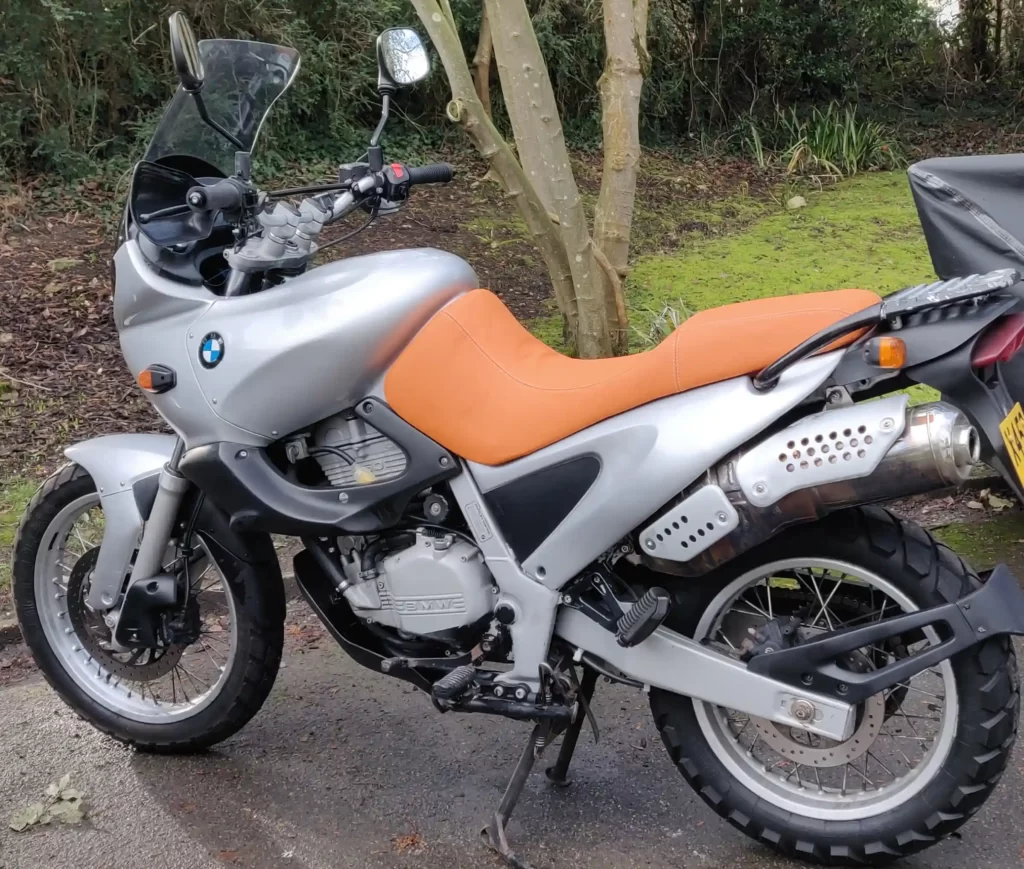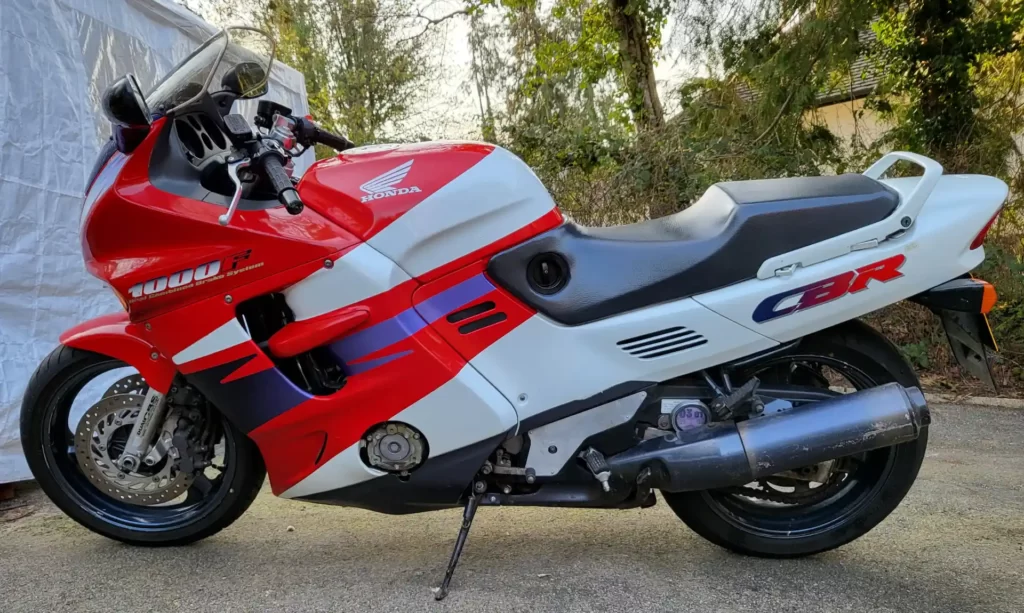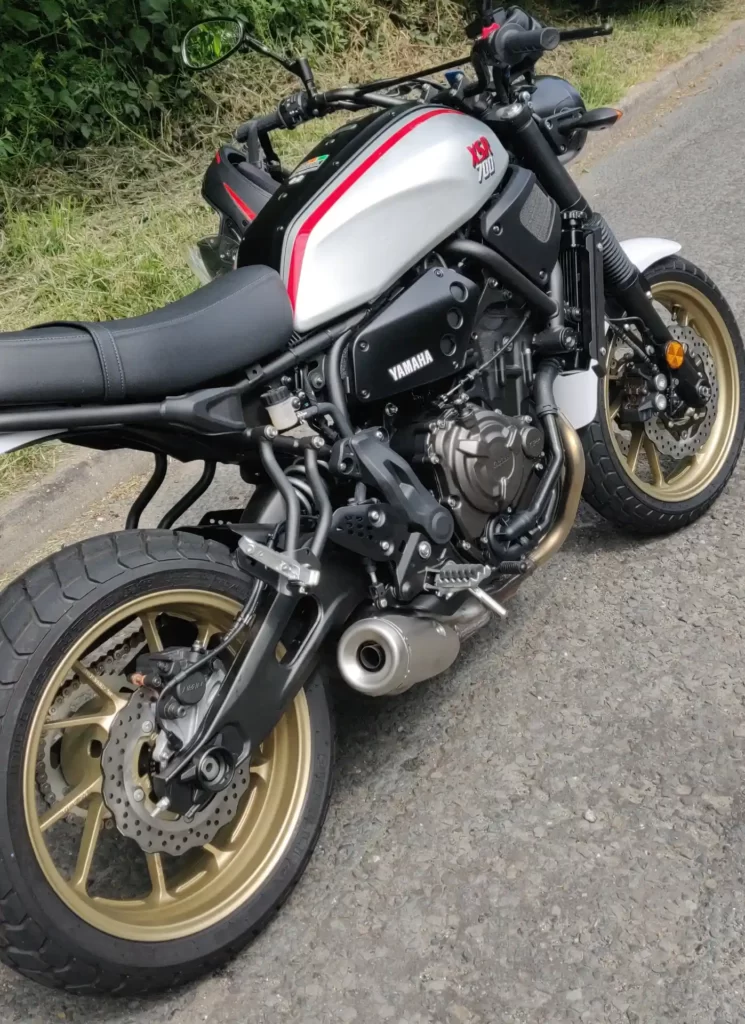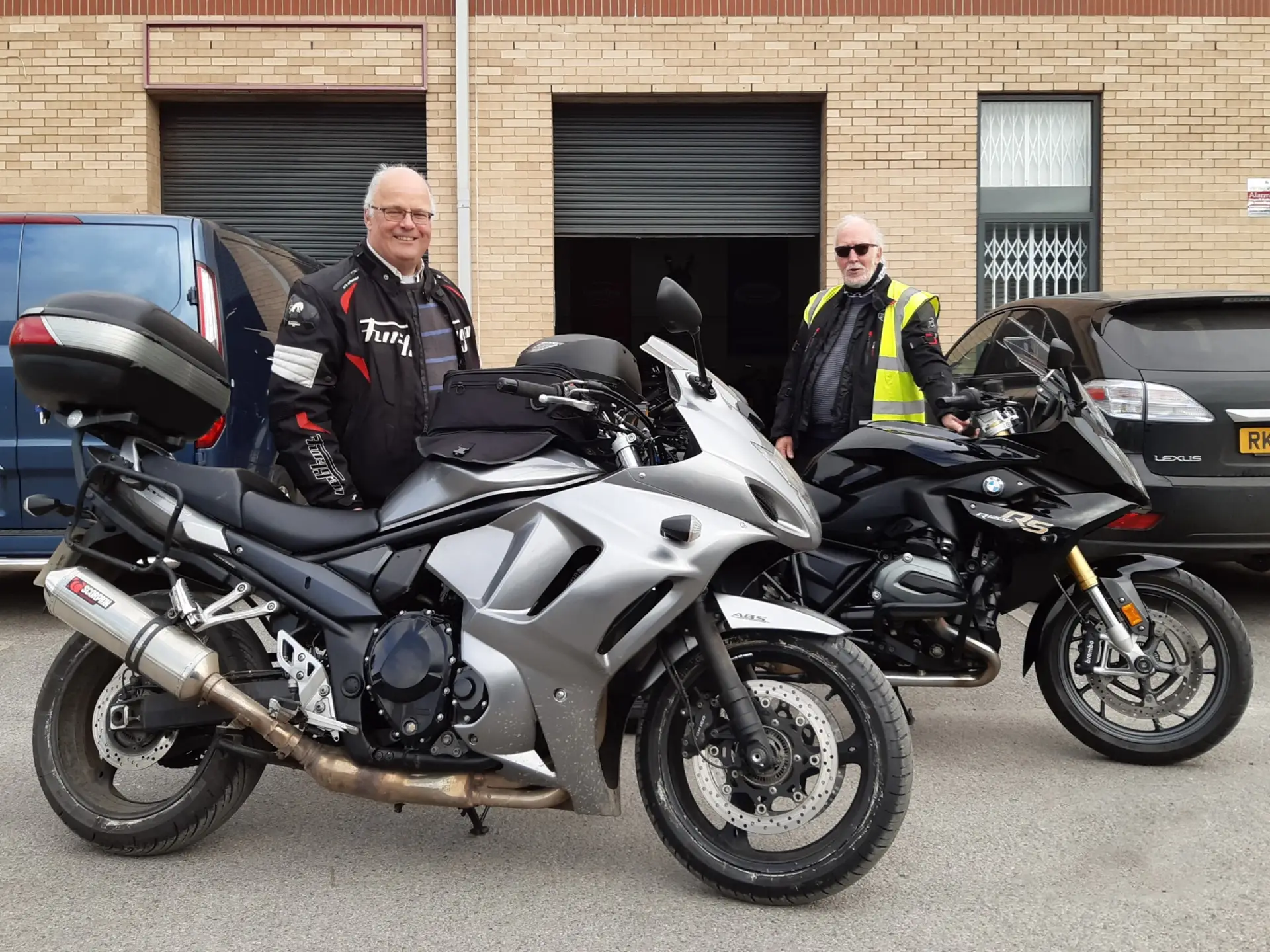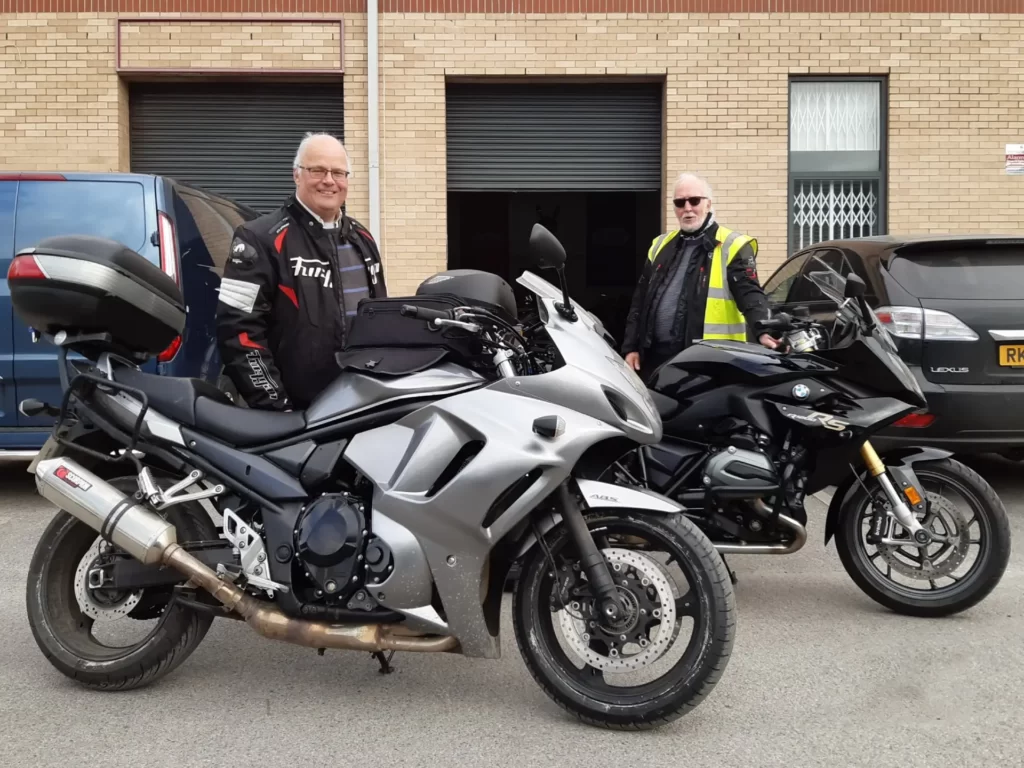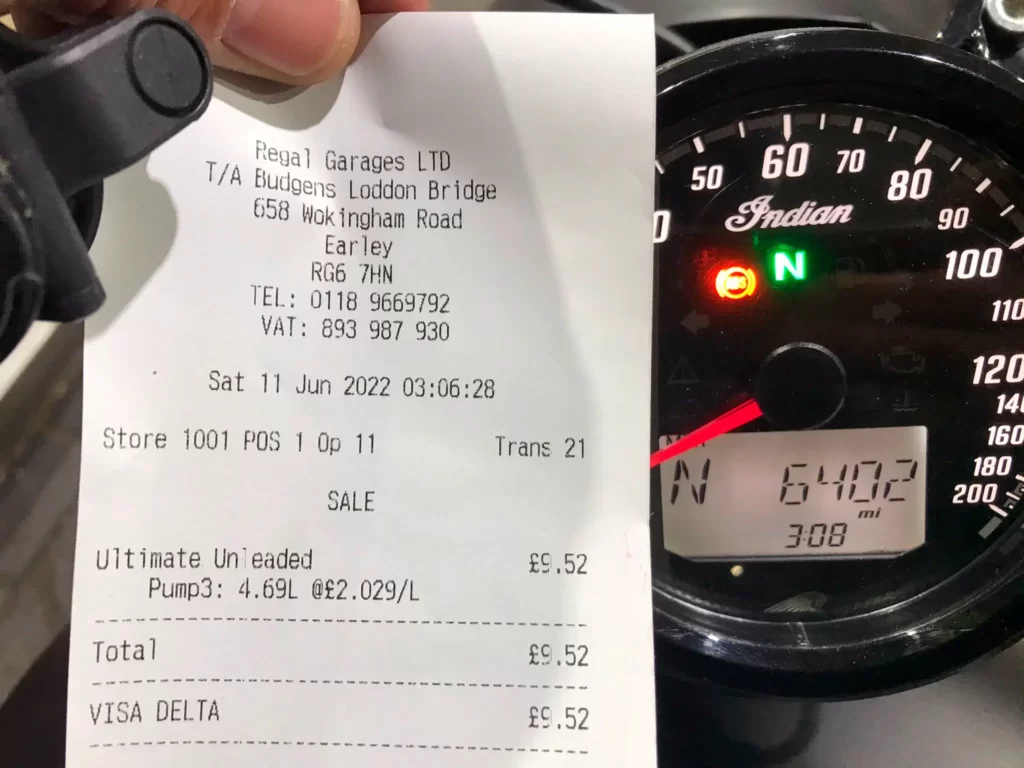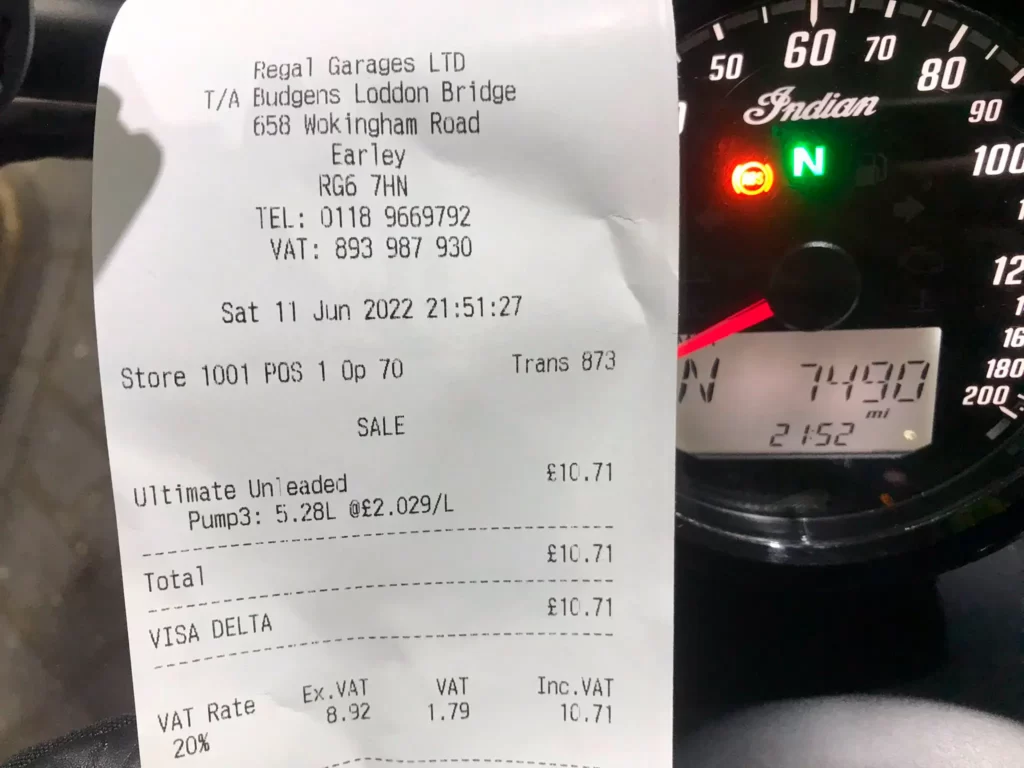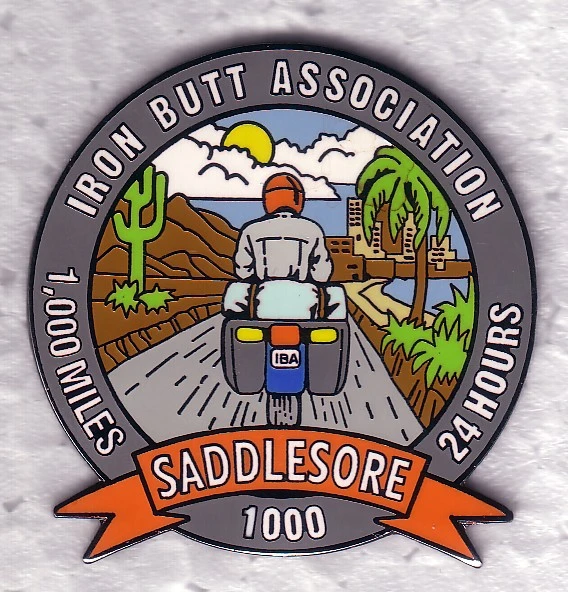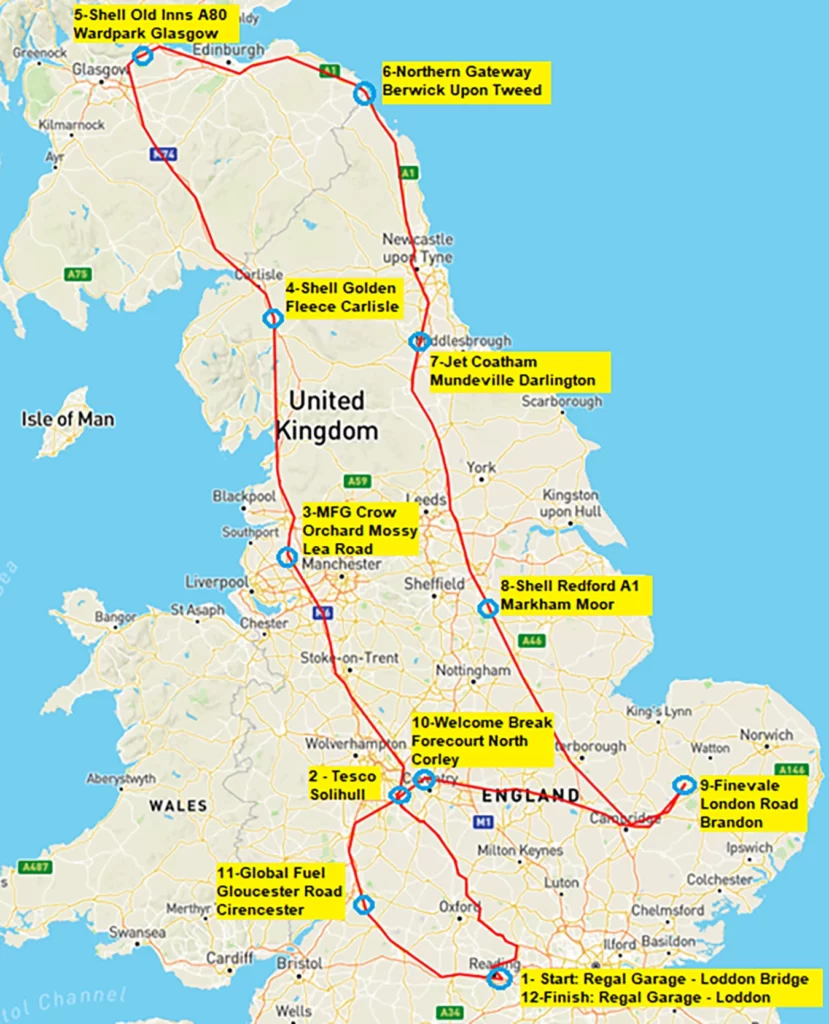A couple of years ago (thanks to lockdown) I came back to biking after an absence of about 35 years, although my initial interest was about restoring older bikes. I started on a 1989 XJ600 with a full rebuild that I still haven’t quite finished, but it was a practice run that taught me an awful lot. In particular, it’s a bit like pulling a bit of wallpaper – don’t do it! Running and riding is good enough.
Having got my DVSA licence at the end of 2020, I didn’t have a bike that i could actually ride. To practice for my test I bought a 20 year old Honda Shadow 125 and, fun as it was, it wasn’t quite up to the job. I then bought an old BMW Funduro 650 that had been somewhat neglected and quickly got that running and riding and looking smart enough, soon followed by a 1995 Honda CBR1000F that had been stood in a garage for 20 years. I still have all these bikes, and really enjoy riding them. However it takes a level of dedication to maintain them in good running order.
What all these bikes have in common are A) carburettors and B) no rider technology. The CBR has linked brakes through a very complex mechanical solution but that’s about it apart from electronic ignition and I have no desire to go back to points.
When I started on my TVAM adventure a little over a year ago I quickly realised that I was going to have to buy a new bike. The risk of breaking down on my old bikes is just too high and wouldn’t be fair on Observers (what a fantastic bunch of people they are). Social rides were putting just too many miles on the bikes that generally have less than 25,000 miles on them. Looking for a new bike was an adventure in itself, with an opportunity to learn about all of the advances that had been made since I last bought a new bike in 1984. I knew very well that I wanted to avoid all of the current rider assist technology. I couldn’t avoid fuel injection or ABS (now legally required) but I could avoid all of the other stuff.
It’s not that I’m a technophobe. I work in technology. My house is brimming with multi-room tech. My car is pure electric with lane assist, adaptive cruise and active collision avoidance. But that’s because my car is a functional tool with the sole purpose of getting me from A to B as efficiently, safely and cost-effectively as possible. The sooner I can get a car with level 5 autonomy the better. But biking for me is purely a hobby. It’s my escape from tech. I don’t use my bikes for anything other than social riding and thoroughly enjoy practising and developing my skills both maintaining and riding the bikes.
Nobody talks about cadence braking anymore or how locking up the back wheel is sometimes what you need to do on a loose surface. I find a finely set up bank of carbs give much better throttle control than the snatchiness of fuel injection. I don’t have an issue with the amount of work that goes into keeping carbs running smoothly and efficiently, in fact I rather enjoy it. I’d really rather ride a bike knowing that it’s my inputs and only my inputs that are controlling the bike and know that I’m developing my skills every time I take a bike out.
For a new bike I settled on a Yamaha XSR700 Xtribute, a retro modern bike that yes, has fuel injection and straight-line ABS, but nothing else. The throttle lever was attached to a cable. There were no rider modes, ABS settings, IMU’s or fairings. That suited me perfectly. An enormously fun bike that has to be ridden. The front end is light and wobbly and gets even lighter and wobblier at speed. The tyres are pseudo off-road with a bit of knobliness that feel like they might break away at any point. It takes practice and experience to ride it effectively. Trying to keep up with sports bikes and GS’s on social rides was an exhausting effort but so much fun.
One year on and I had to conclude that I needed a bike that could handle distances and touring. The Yamaha XSR700 is good for a 150 mile run, but anything more is just too much, and I’d like to do some touring or go on longer runs without needing a recovery day afterwards. And that means that I am going to have to adapt to a largeish touring bike with rider assist tech. So last week I traded in my XSR against a new Yamaha Tracer 900GT complete with panniers and a big screen and a 6 axis inertial measurement unit (IMU) and semi-active suspension and a plethora of modes to choose from.
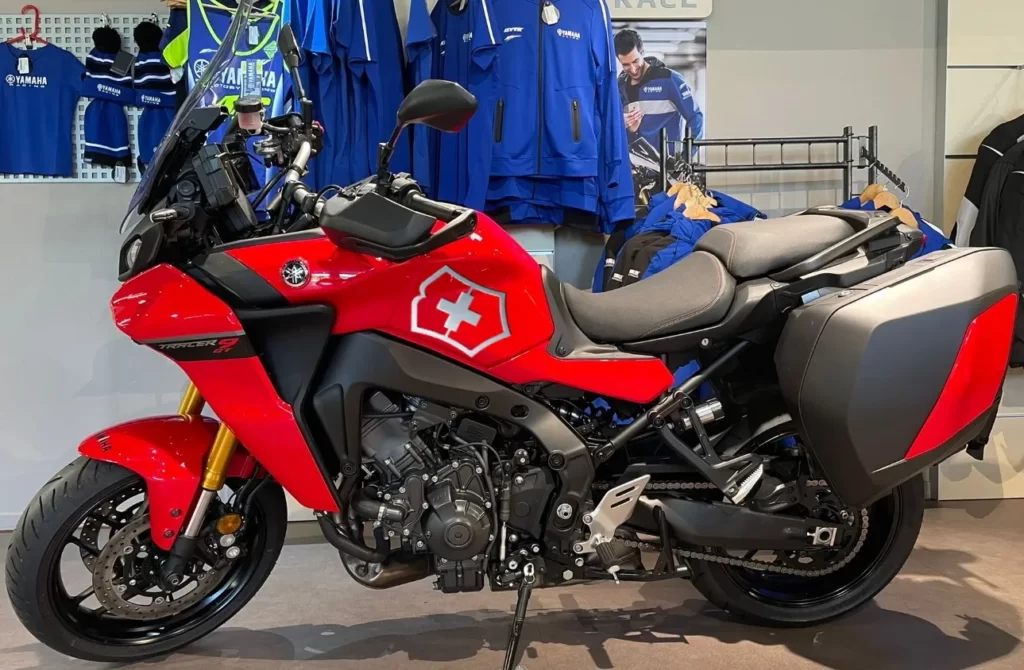
A few hundred miles in and I don’t yet know whether it’s all good or all bad. I love the quick shifter although down shifts are going to take a bit of practice. There’s a green up down arrow to indicate whether the system is ready but who has time to look at that and, under relatively heavy braking with a down shift, I found the ABS kicking in on the back wheel, something that I have largely been able to finesse on my other bikes with a slow release of the clutch to give a bit of slip. So I might just stick to clutched down shifts.
The big perspex barn door that pretends to be a fairing is horrible, and I’ll have to find an aftermarket, less intrusive, solution. The semi-active suspension doesn’t appear too troublesome. There are 2 modes, soft and hard or, as the dealer put it, English roads and French roads. In soft mode the bike felt very stable, but I guess I’ve yet to push it hard. So far I have no idea whether the traction control and power modes have been interfering in any way. A six axis IMU is basically the same tech as you have on a mobile phone. The six axes are lean, pitch, yaw, thrust, heave and sway, with umpteen data points per second to determine whether the bike is sliding, skidding, spinning or wheelieing.
The intervention is really nothing more than a power reduction. Active braking as I have in my car is not a part of the setup. It is also largely a dumb technology. As far as I am aware there is no AI learning process to adapt to different riding styles, but I can imagine that will be the next step. So far I have no idea whether any of the parameters have been exceeded at any point. I can feel the forks extend under heavy acceleration, but I don’t know whether the system prevented the front wheel from lifting. I don’t know whether the back wheel was in danger of breaking traction in a tight corner, though I doubt it. I don’t know whether the system kicked in when I was accelerating on gravel. I guess full discovery will only come once I start pushing it.
My attitude to this tech is that I have to be a little more grown up about the whole thing. One day it may make the difference between getting around a corner or doing a bit of hedge trimming and possibly much worse. I will definitely keep riding my old tech free bikes. In fact, I now have more freedom to be a little more extreme in my choice of old bikes. I very much want to keep developing my riding skills. But for a long social ride or tour I’m happy to trade a small amount of pure riding fun for a bit more freedom to travel. I guess even Biggles might have traded his Sopwith Camel for a Cessna Caravan.
Stephen Cudd
First published in Slipstream August 2022

